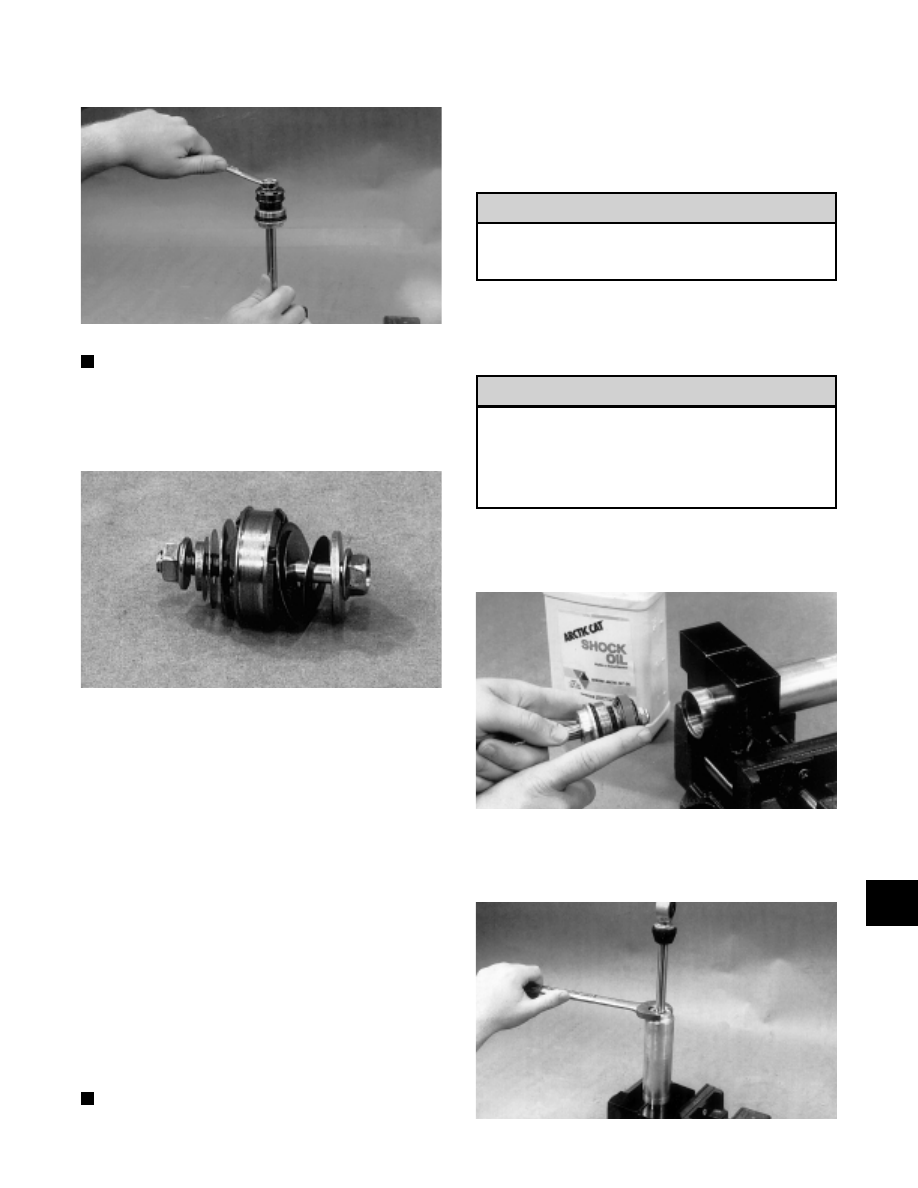Snowmobile Arctic Cat (2000 year). Instruction - part 158

Fig. 9-456
AP028
NOTE: If shock valving must be removed for
cleaning, remove all valving as a complete
assembly and place on a 5/16 x 3-in. cap screw to
keep in proper order. Note which side is the top side
for assembly purposes.
Fig. 9-457
AP032
14. Items to inspect:
A. Shock shaft for straightness, nicks, or burrs.
B. Shaft bearing end cap — clean, inspect, or replace.
C. Inside of shock body for scratches, burrs, or
excessive wear.
D. Piston rings for cuts, chipped or nicked edges, or
excessive wear.
E. O-rings for nicks, cuts, or cracks.
F. Valves for kinks or waves.
G. Rubber damper (ski shocks only) for chipping,
cracking, or being missing.
15. Items to replace:
A. Bleed screw O-ring on the floating piston.
B. Shock shaft bearing cap if any signs of oil leaks or
damage.
C. Any part worn or damaged.
NOTE: For shaft, shaft eyelets, or shaft bearing
cap replacement, see Shaft Eyelet or Bearing Cap
and Shaft Seal sub-section.
ASSEMBLING
1. Place the shock shaft eyelet into the vise; then
assemble valves and piston and tighten the lock nut
to 2.1-2.8 kg-m (15-20 ft-lb).
DO NOT OVER-TIGHTEN. If excessive torque is
applied, damage to the piston and valves will
occur.
2. Place the shock body between the two Gas Shock
Retaining Blocks (p/n 0644-142) and secure in a
vise.
It is important that the Gas Shock Retaining
Blocks (p/n 0644-142) are used during both
disassembly and assembly. Any other method of
s e c u r i n g t he s h ock b ody du r in g t h e s e
procedures may deform the shock body
cylinder.
3. Apply a light coat of oil on the O-ring and piston
ring and install piston into shock body.
Fig. 9-458
AP033
4. Place the shaft bearing cap into the body and tighten
securely.
Fig. 9-459
AP026
! CAUTION
! CAUTION
9
9-155